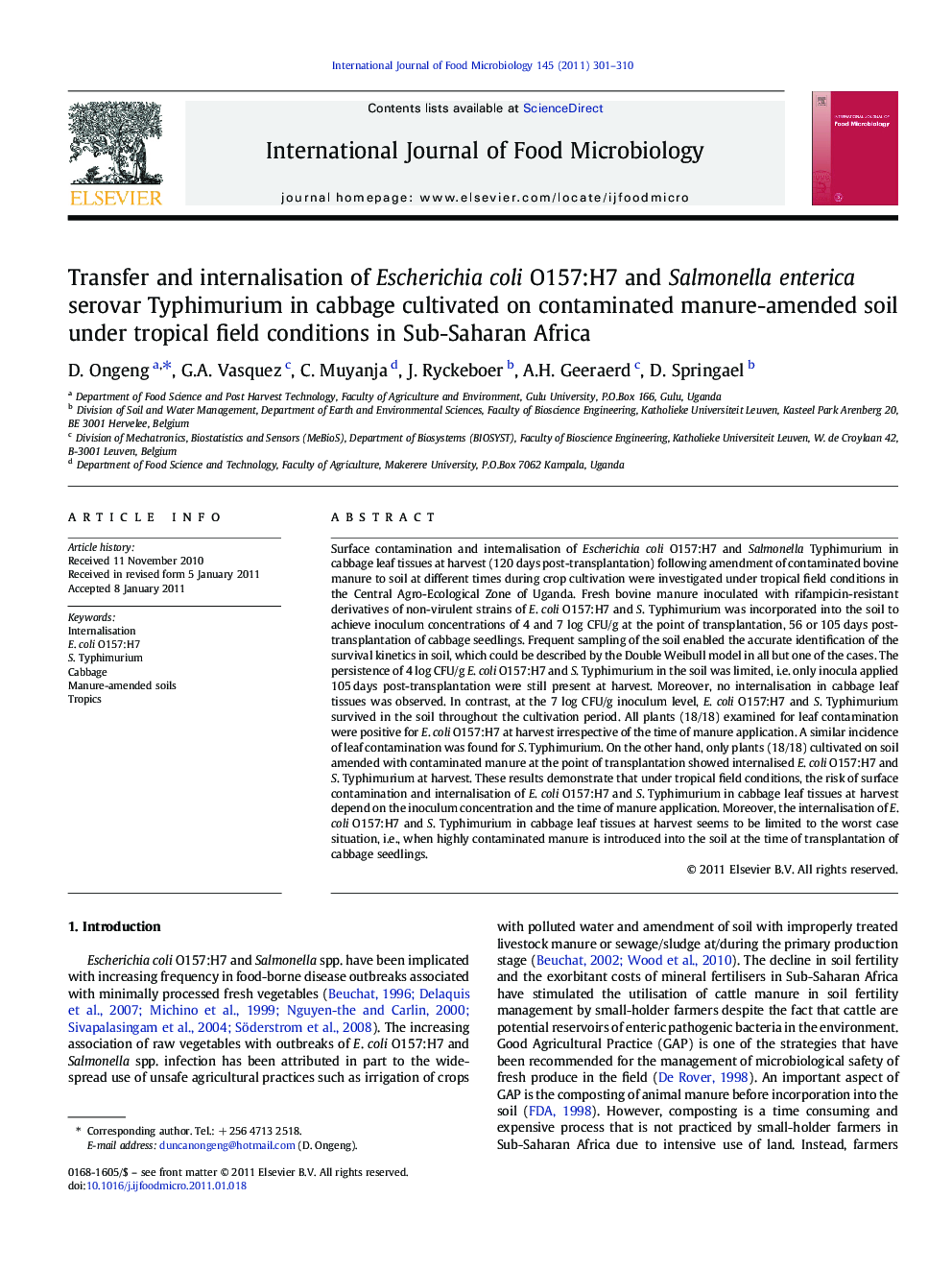| کد مقاله | کد نشریه | سال انتشار | مقاله انگلیسی | نسخه تمام متن |
|---|---|---|---|---|
| 4368757 | 1616674 | 2011 | 10 صفحه PDF | دانلود رایگان |

Surface contamination and internalisation of Escherichia coli O157:H7 and Salmonella Typhimurium in cabbage leaf tissues at harvest (120 days post-transplantation) following amendment of contaminated bovine manure to soil at different times during crop cultivation were investigated under tropical field conditions in the Central Agro-Ecological Zone of Uganda. Fresh bovine manure inoculated with rifampicin-resistant derivatives of non-virulent strains of E. coli O157:H7 and S. Typhimurium was incorporated into the soil to achieve inoculum concentrations of 4 and 7 log CFU/g at the point of transplantation, 56 or 105 days post-transplantation of cabbage seedlings. Frequent sampling of the soil enabled the accurate identification of the survival kinetics in soil, which could be described by the Double Weibull model in all but one of the cases. The persistence of 4 log CFU/g E. coli O157:H7 and S. Typhimurium in the soil was limited, i.e. only inocula applied 105 days post-transplantation were still present at harvest. Moreover, no internalisation in cabbage leaf tissues was observed. In contrast, at the 7 log CFU/g inoculum level, E. coli O157:H7 and S. Typhimurium survived in the soil throughout the cultivation period. All plants (18/18) examined for leaf contamination were positive for E. coli O157:H7 at harvest irrespective of the time of manure application. A similar incidence of leaf contamination was found for S. Typhimurium. On the other hand, only plants (18/18) cultivated on soil amended with contaminated manure at the point of transplantation showed internalised E. coli O157:H7 and S. Typhimurium at harvest. These results demonstrate that under tropical field conditions, the risk of surface contamination and internalisation of E. coli O157:H7 and S. Typhimurium in cabbage leaf tissues at harvest depend on the inoculum concentration and the time of manure application. Moreover, the internalisation of E. coli O157:H7 and S. Typhimurium in cabbage leaf tissues at harvest seems to be limited to the worst case situation, i.e., when highly contaminated manure is introduced into the soil at the time of transplantation of cabbage seedlings.
Research Highlights
► Contamination depends on the inoculum density and time of manure amendment.
► At 4 log CFU/g, superficial contamination occurs for late-term manure amendment.
► At 7 log CFU/g, contamination is superficial independent of manure amendment time.
► At 7 log CFU/g, internalisation occurs for manure applied during transplantation.
► Risk of contamination correlates with length of pathogen survival in the soil.
Journal: International Journal of Food Microbiology - Volume 145, Issue 1, 31 January 2011, Pages 301–310